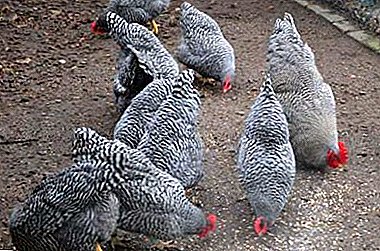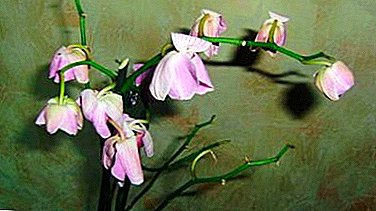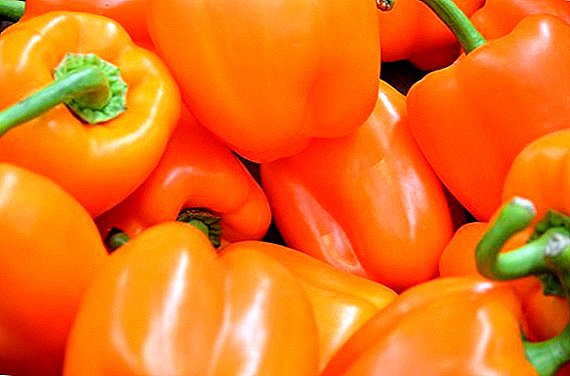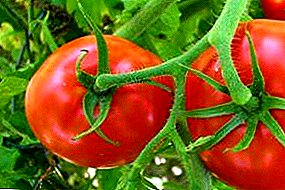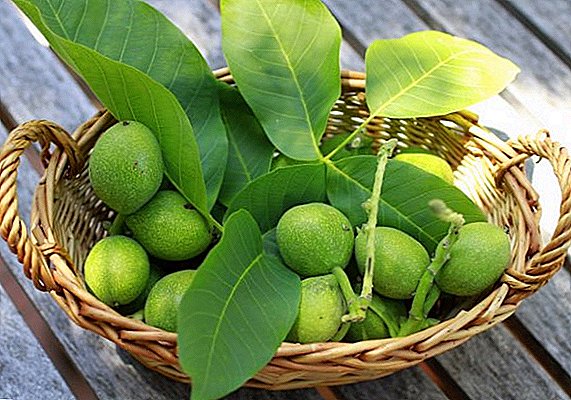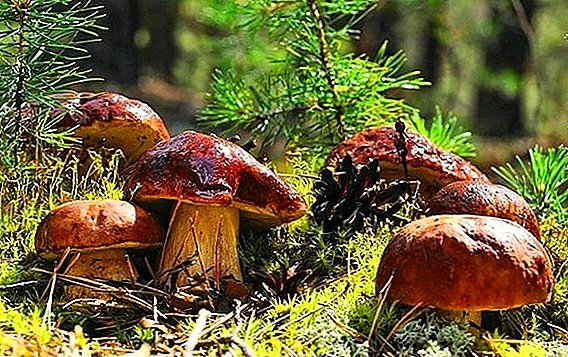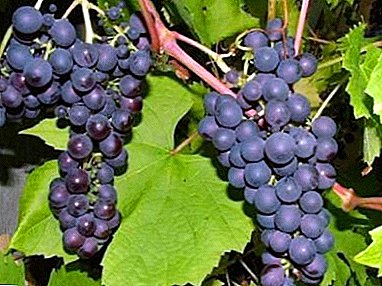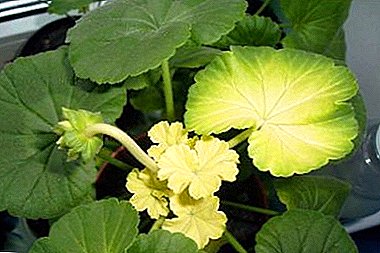
Almost in every house or apartment you can find a corner with fresh flowers, among which will certainly be pelargonium.
The plant easily tolerates a lack of moisture, but loves a fair amount of light.
With proper care, the plant will be pleasing to the eye. It happens that the leaves turn yellow and frighten the host, what makes it happen, what to do in this case? We will understand the article.
Features of a geranium leaf plate
The leaves are positioned as simple, in some of the species palmate or palmately-dissected.
Diagnosis - yellowing leaves
Consider why sometimes the leaves turn yellow with spots, and sometimes they may be at the edges, and slowly curl up to the middle of the sheet and dry. If the spots become red or rusty, then it is worth talking about a serious disease of the plant, and not about the wrong care, as in the case of yellowing. About the diseases that can affect the leaves of pelargonium, we described in this article.
Why is this happening at home?
Among the main causes of yellowing of leaves should be highlighted:
 The main reason is cramped pot, does not allow the development of the rhizome of the plant. Some people think that a flower pot may be small, but in fact it needs space and the ability to get nutrients from the soil.
The main reason is cramped pot, does not allow the development of the rhizome of the plant. Some people think that a flower pot may be small, but in fact it needs space and the ability to get nutrients from the soil.- Wrong flower care. The problem usually appears in the autumn-winter period, when the heaters are turned on.
- No drainage. In a pot of pelargonium drainage may be absent, then the leaves not only turn yellow, but also lose their color saturation.
- Excess nitrogen in soil. Sometimes it can be disastrous for the plant. You can find out how to feed pelargonium correctly here.
What to do?
Let us examine what to do if yellowing has developed, than to treat the plant. With each of the reasons you can cope quite simply:
- It is necessary to transplant the plant, picking up the pot under the size of the plant, so that its root system can develop further.
- It is necessary to set aside the plant from the heating devices, not to put the plant in drafts. The temperature at which the flower is most comfortable is 10-12 degrees Celsius.
- It will be reasonable to bring the flower to a glazed loggia, where there is enough light, but at the same time the temperature will be comfortable for the flower and its further growth.
- If there is an excess of nitrogen, potash phosphate fertilizers should be used. This should be done in the summer time.
The sequence of finding and eliminating the cause is as follows:
- Check if there is drainage in the pot. If it is missing, the plant must be transplanted. If the geranium is in bloom, then all flower stalks are pre-cut.
- Rearrange the pot on the sunny side.
In the case of direct sunlight will need to create an artificial blackout.
We check that there are no drafts at this place.
- There should be no heaters and batteries nearby.
- We try to maintain an acceptable temperature, but this recommendation applies mainly to the cold season.
- If there is dry air in the room, then we place a container with water or expanded clay next to the plant, having previously moistened it.
- We regulate top dressing and watering of a plant, according to a season. Observe the measure of the amount of water and nutrients.
How to warn?
Prevent yellowing of the plant can be subject to the rules of care and watering.
Namely:
 Observe temperature. In the winter season, the temperature of the room where the plant is located should not exceed 15 degrees, but also not fall below 10.
Observe temperature. In the winter season, the temperature of the room where the plant is located should not exceed 15 degrees, but also not fall below 10.- Lighting. Plants love light, but it is better to avoid direct sunlight that can burn leaves and harm them.
- Humidity. Geranium is not whimsical to humidity, you should not spray a flower. And if the plant is next to other flowers in need of water procedures, then you need to carry them out carefully, trying not to touch the geranium.
- Watering. The soil should be kept moist, but do not flood it. Do not leave the pot in the pot, and also provide a good drainage system in the pot.
- Top dressing and mineral fertilizers. Why geranium can dry out during flowering? Flower can not be fertilized with organic fertilizers.
When geranium is in a period of growth and flowering, it needs a standard top dressing. During flowering fertilizer can be used several times a month.
- Transfer. Replanting a plant is necessary only if the roots of the plant have grown considerably and the flower does not have enough space or the flower has been flooded.
Learn more about the rules of keeping a plant at home can be found here, and in this article you will find recommendations for the care of pelargonium in open ground.
What if nothing helps?
If all of these methods did not help, and the plant transplant failed, you should pay attention to other signs, perhaps the plant has a serious disease. Carefully inspect the rhizome and leaves for the presence of parasitic pests or decay that must be removed before transplanting, like all damaged leaves. How to help Pelargonium in the detection of diseases or pests, read in this article.
With respect to temperature and care of the plant, they will never turn yellow and fall off. Attention and proper attitude to the flower will keep it healthy and will delight you for a long time. And picked up proper care will prolong the life of the plantwhich will regularly delight inflorescences and wonderful aroma.


 The main reason is cramped pot, does not allow the development of the rhizome of the plant. Some people think that a flower pot may be small, but in fact it needs space and the ability to get nutrients from the soil.
The main reason is cramped pot, does not allow the development of the rhizome of the plant. Some people think that a flower pot may be small, but in fact it needs space and the ability to get nutrients from the soil. Observe temperature. In the winter season, the temperature of the room where the plant is located should not exceed 15 degrees, but also not fall below 10.
Observe temperature. In the winter season, the temperature of the room where the plant is located should not exceed 15 degrees, but also not fall below 10.
